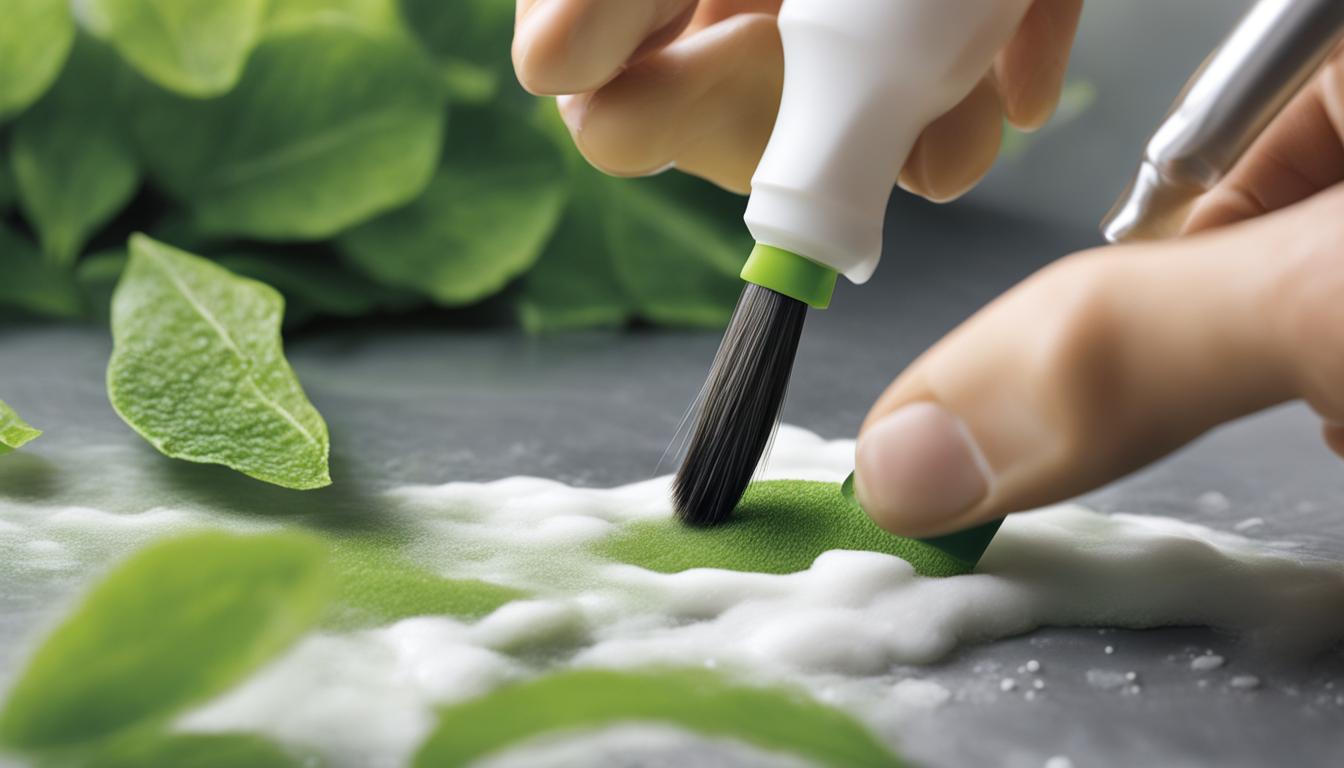
Mold growth in indoor plants can be a common issue, but with the right strategies, you can effectively combat and prevent it.
By following certain techniques such as removing mold from leaves and soil, using natural remedies like baking soda and neem oil, improving soil drainage, providing proper ventilation, and maintaining cleanliness, you can create a healthier environment for your indoor plants and promote their overall well-being.
In this article, we will explore various methods and tips to combat mold in indoor plants, helping you ensure their longevity and vitality.
Key Takeaways:
- Removing mold from leaves and soil is crucial in combating mold growth in indoor plants.
- Natural remedies like baking soda, mouthwash solution, cinnamon spray, apple cider vinegar, and neem oil can be effective in controlling mold.
- Improving soil drainage and ventilation is essential to prevent mold in indoor plants.
- Maintaining cleanliness and removing organic matter from plant soil can help prevent mold growth.
- Adopting preventive measures and healthy plant care habits can minimize the risk of mold growth in indoor plants.
Removing Mold from Leaves and Soil
To combat mold in indoor plants, it is crucial to address mold growth on the leaves and soil. Here are some effective methods to remove mold and prevent its spread:
- Wiping mold off leaves: Mix a solution of baking soda and water and use a soft cloth to gently wipe the affected leaves. This solution helps neutralize mold and inhibit further growth. Avoid wiping the mold off, as it can spread spores.
- Cutting off moldy leaves: If the mold has severely affected the leaves, it is best to cut them off. This not only improves airflow but also prevents the spread of the fungus to healthy parts of the plant.
- Scooping away mold on soil: Use a spoon or shovel to scoop away the moldy areas on the soil’s surface. Alternatively, consider repotting the plant with sterile soil to eliminate the mold completely.
Using these methods, you can effectively remove mold from your indoor plants and prevent its spread. However, it is essential to regularly monitor your plants and take preventive measures to minimize the chances of mold recurrence.
Natural Fungicide for Mold Removal
In addition to physical removal, using a natural fungicide can help eliminate mold and prevent its growth in plants. Here are some natural options to consider:
- Baking soda spray: Mix a solution of baking soda and water and spray it on the affected areas. Baking soda has antifungal properties that can effectively combat mold.
- Neem oil: Apply diluted neem oil to the base of the plant to deter mold growth. Neem oil acts as a natural fungicide and also repels pests.
| Fungicide | Application | Effectiveness |
|---|---|---|
| Baking soda | Spray on affected areas | High |
| Neem oil | Apply to the base of the plant | Moderate |
These natural remedies can be safe and eco-friendly alternatives to synthetic fungicides, providing effective mold control in indoor plants.
Using Natural Remedies for Mold Control
Mold growth in indoor plants can be effectively controlled and prevented using natural remedies. These remedies provide safe and eco-friendly alternatives to synthetic fungicides. By utilizing baking soda, mouthwash, cinnamon, apple cider vinegar, and neem oil, you can combat mold and promote a healthier environment for your plants.
Baking Soda for Mold Removal
Baking soda is a versatile household ingredient that can also be used to remove mold from indoor plants. Create a mixture of baking soda and water and apply it as a spray to neutralize mold on leaves. This natural remedy helps inhibit mold growth and prevents its spread to other parts of the plant.
Mouthwash Solution for Mold Removal
Another natural remedy for mold control is using a mouthwash solution. Mix mouthwash with water and use it to wipe down the leaves of your indoor plants. While not scientifically proven, some plant enthusiasts find it effective in removing mold and preventing its recurrence.
Cinnamon Spray for Mold Prevention
Cinnamon has antifungal properties and can be used as a spray to prevent mold growth in indoor plants. Dissolve cinnamon in warm water and apply the solution to the leaves and soil. This natural remedy acts as a deterrent to mold and helps create a healthier environment for your plants.
Apple Cider Vinegar for Mold Control
Apple cider vinegar can be used as a natural spray to control mold in indoor plants. Mix apple cider vinegar with water and spray it directly on the affected areas. This remedy helps inhibit mold growth and prevents it from spreading to other parts of the plant.
Neem Oil for Mold Prevention
Neem oil is an organic remedy that can be applied to the base of indoor plants to prevent mold growth. The oil acts as a natural deterrent and inhibits the growth of mold. Apply neem oil according to the instructions on the product label to ensure safe and effective use.
By utilizing these natural remedies, you can effectively control mold in indoor plants without the use of harsh chemicals. Remember to always test a small area of the plant before using any remedy extensively and consult with a gardening professional if you have any concerns.
Improving Soil Drainage and Ventilation
When it comes to combating mold in indoor plants, improving soil drainage and ventilation are crucial factors to consider. Proper soil drainage ensures that excess water can escape, preventing the soil from becoming waterlogged and creating a breeding ground for mold.
Adequate ventilation helps reduce humidity levels and promotes air circulation, making it less favorable for mold growth.
One way to improve soil drainage is by using porous materials in your potting mix. Adding materials such as perlite or sand can help create air pockets in the soil, allowing water to drain efficiently. Another option is to repot your plants using sterile soil, which reduces the risk of introducing mold spores into the potting mix.
To enhance ventilation, consider placing your indoor plants in areas with good airflow or using fans to circulate the air around them.
Opening windows or using exhaust fans can also help decrease humidity levels and discourage mold growth. Additionally, spacing out your plants allows for better air circulation and reduces the chances of mold spreading from one plant to another.
Comparing Different Porous Materials for Soil Drainage
| Porous Material | Benefits | Considerations |
|---|---|---|
| Perlite | – Lightweight and retains some moisture – Promotes drainage and aeration | – Can float to the surface if not mixed well – May require additional watering due to increased drainage |
| Sand | – Improves drainage and prevents compaction – Allows air circulation in the soil | – Can retain too much moisture if used in excess – May affect pH levels of the soil |
| Vermiculite | – Retains moisture while improving drainage – Helps with nutrient retention | – Can compact over time, reducing drainage – May retain too much water if used excessively |
In summary, improving soil drainage and ventilation plays a vital role in preventing mold growth in indoor plants. By using porous materials, repotting with sterile soil, and ensuring proper airflow, you can create a healthier environment for your plants and minimize the risk of mold-related issues.
Maintaining Cleanliness and Removing Organic Matter
In order to prevent mold growth in indoor plants, it is crucial to prioritize cleanliness in plant care and regularly remove organic matter from the plant soil.
Dead leaves, fallen debris, and other organic materials can serve as a food source for mold, so it is important to remove them promptly. By doing so, you can minimize the risk of mold taking hold and spreading to other areas of your plants.
Dusting the leaves of your indoor plants is another important step in maintaining cleanliness. Dust can not only block sunlight and hinder photosynthesis, but it can also trap moisture and create a favorable environment for mold growth.
Using a damp cloth or sponge, gently wipe down the leaves to remove any accumulated dust. This will not only improve the appearance of your plants but also reduce the likelihood of mold developing.
In addition to cleanliness, removing dead leaves also helps prevent pests that are attracted to mold. Insects and other pests are often drawn to decaying organic matter, including mold-infested leaves.
By promptly removing dead leaves and other organic debris, you can keep your indoor plants healthy and pest-free. Regularly inspect your plants for any signs of pest infestation and take appropriate measures to address the issue if necessary.
Maintaining Cleanliness Checklist:
- Remove dead leaves and fallen debris from the plant soil.
- Dust the leaves of your indoor plants regularly to prevent the accumulation of dust.
- Inspect your plants for any signs of pest infestation and take immediate action if needed.
By maintaining cleanliness and removing organic matter, you can create a clean and healthy environment for your indoor plants, reducing the risk of mold growth and promoting their overall well-being.
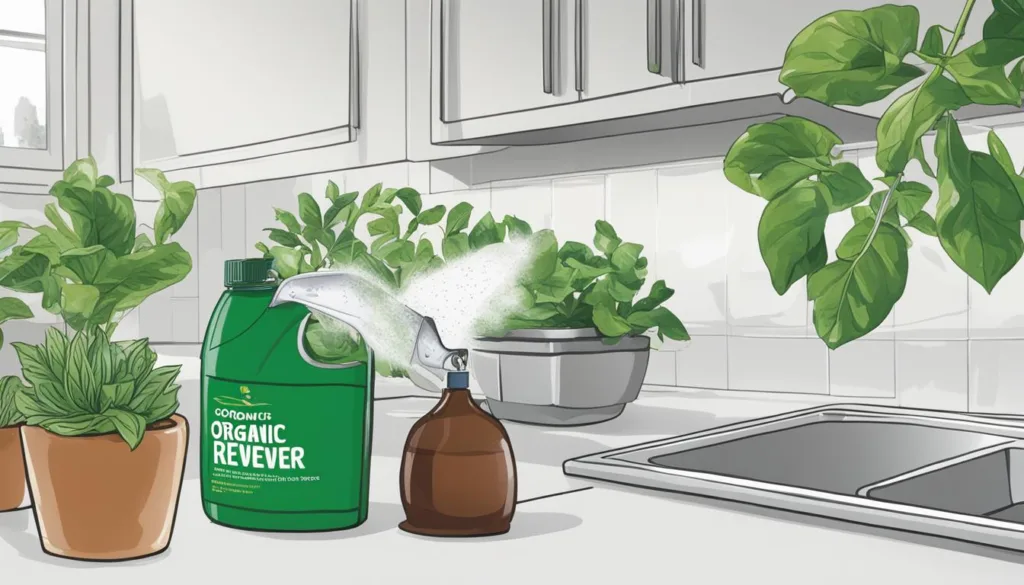
Preventive Measures and Healthy Plant Care Habits
To prevent mold growth in indoor plants, it is essential to implement preventive measures and adopt healthy plant care habits. By following these strategies, you can create an environment that is less conducive to mold and promote the overall well-being of your plants.
Ensuring Proper Watering and Drainage
One of the key preventive measures is to ensure proper watering and drainage for your indoor plants. Overwatering can create excess moisture, leading to the growth of mold. To prevent this, allow the top layer of soil to dry out before watering again. Make sure your plant’s pot has drainage holes to allow any excess water to escape. If your plants are experiencing poor drainage, consider adding peat moss, vermiculite, or other amendments to improve the soil’s drainage capacity.
Providing Adequate Sunlight
Adequate sunlight is crucial for the health of indoor plants and can also help in preventing mold growth. Sunlight contains UV radiation, which has natural antifungal properties. Place your plants in areas where they can receive sufficient sunlight throughout the day. If natural sunlight is limited, you can supplement it by using grow lights specifically designed for indoor plants.
Improving Air Circulation
Improving air circulation is another effective preventive measure against mold growth. Good airflow helps to reduce humidity levels, making the environment less favorable for mold.
Open windows or use fans to promote air movement in the room where your plants are located. Spacing out your plants and avoiding overcrowding can also enhance air circulation and decrease the risk of mold.
By implementing these preventive measures and adopting healthy plant care habits, you can minimize the risk of mold growth in your indoor plants and create an environment that is conducive to their growth and well-being.
Combating mold in indoor plants requires a combination of preventive measures and effective techniques. By following the strategies outlined in this article, you can promote the overall health and vitality of your indoor plants while minimizing the risk of mold-related issues.
Removing mold from leaves and soil is the first step in mold control. Whether you choose to wipe mold off leaves or cut off heavily affected ones, it’s important to prevent further spread. Additionally, addressing moldy soil through scooping or repotting can help eliminate the source of mold growth.
Using natural remedies such as baking soda, mouthwash, cinnamon, apple cider vinegar, and neem oil can be an eco-friendly alternative to synthetic fungicides. These natural options can effectively control mold growth and prevent it from recurring.
Improving soil drainage and ventilation are critical in creating an environment less conducive to mold. Ensuring proper spacing, using porous materials, and providing proper airflow can help maintain healthier conditions for your plants.
Furthermore, maintaining cleanliness by removing organic matter and dust, along with adopting healthy plant care habits like proper watering, adequate sunlight, and improving air circulation, can significantly reduce the risk of mold growth and promote plant health.
By being proactive and implementing these mold prevention techniques, you can nurture a thriving indoor plant collection and enjoy the benefits of a mold-free environment.
Remember to regularly monitor your plants and take prompt action if any signs of mold growth occur in order to maintain their longevity and well-being.
FAQ
How can I remove mold from leaves and soil?
You can wipe mold off leaves with a mixture of baking soda and water, misting the affected areas thoroughly. For mold on soil, use a spoon or shovel to scoop away moldy areas or consider repotting the plant with sterile soil.
What natural remedies can I use to control mold in indoor plants?
You can use baking soda mixed with water as a spray to neutralize mold on leaves. Mouthwash solution or a mixture of mouthwash and water can be used for wiping down leaves. Cinnamon spray made by dissolving cinnamon in warm water can also help prevent mold growth. Other options include using apple cider vinegar mixed with water as a spray or applying neem oil to the base of the plant to deter mold.
How can I improve soil drainage and ventilation to prevent mold growth?
Ensure your plant’s pot has drainage holes to allow excess water to escape. You can improve soil drainage by adding peat moss, vermiculite, or other amendments. Proper ventilation can be achieved by opening windows, using fans, or spacing out plants to enhance air circulation.
How can I maintain cleanliness and remove organic matter to prevent mold in indoor plants?
Regularly remove dead leaves, fallen debris, and organic matter from the soil. Wiping down plant leaves with a damp cloth can help remove dust and inhibit mold spores. Keeping your plant collection manageable and avoiding overcrowding can also prevent excessive humidity and mold growth.
What preventive measures and healthy plant care habits can I adopt to minimize mold growth?
Ensure proper watering by allowing the top layer of soil to dry out before watering again. Provide adequate sunlight or use grow lights to supplement light needs. Improve air circulation by opening windows, using fans, or spacing out plants. Avoid overwatering and maintain cleanliness to decrease mold risk.


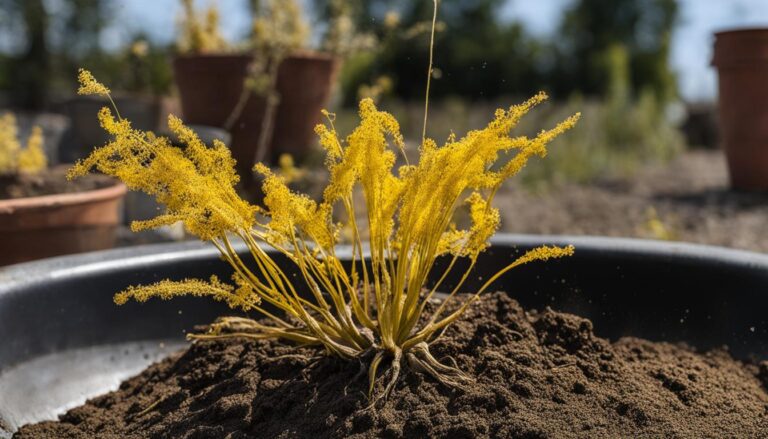
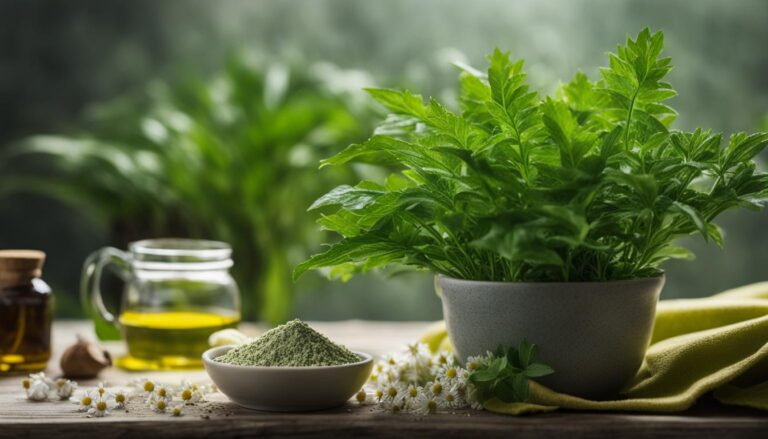


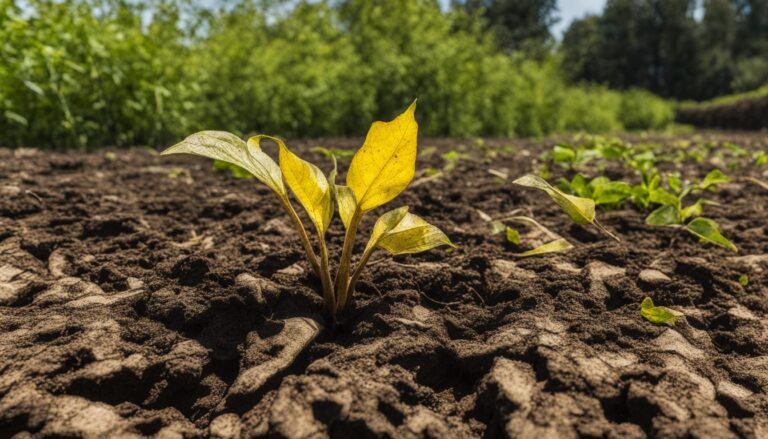
One Comment
Comments are closed.